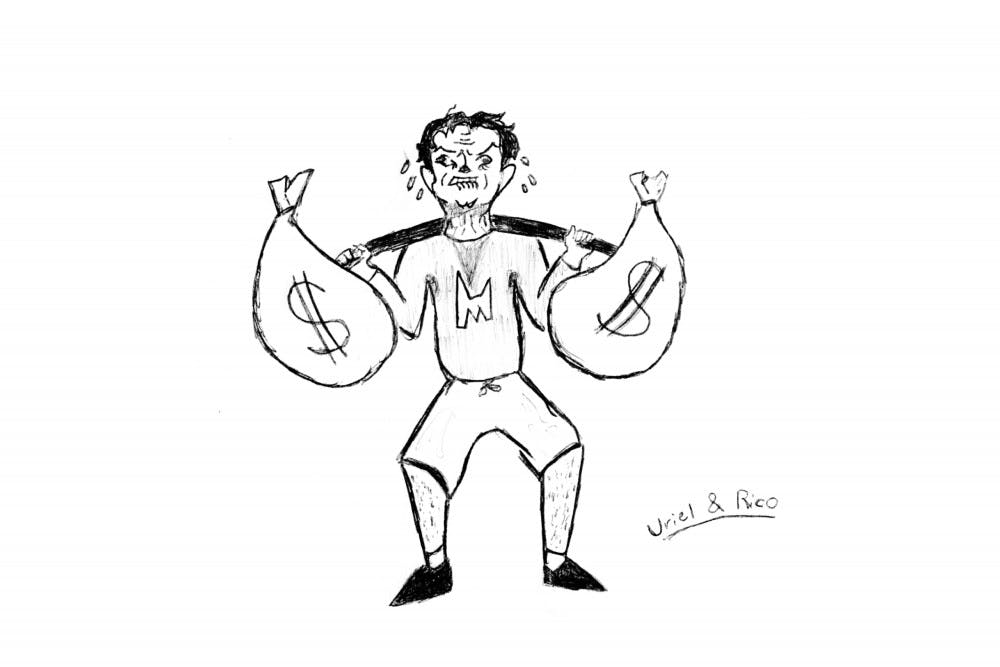Of all the ways to divide a student body, Middlebury often finds itself separated into two camps: athletes and NARPs (non-athletic regular person). Student culture plays a large role in perpetuating this divide — often the Middlebury party scene falls along team lines — but administrative and monetary factors also play important roles. One manifestation of this is the costs associated with athletics, from PE credits to athletic facilities to the new field house. Everyone pays into these things, but only a few of us — athletes — benefit.
Students pay $60,000 to attend Middlebury College each year and, theoretically, these dollars pay for all the credits they will need to graduate. For our varsity teams, these dollars also pay the salaries of our extensive coaching staff. Yet PE credits, whose instructors should be paid with these same dollars, often have fees associated with them, thereby making many of those classes inaccessible to students who are already carrying undue financial burden. That the physical education options laid in front of a student look different depending on that student’s financial situation goes against the equality of opportunity Middlebury claims to stand for and further separates athletes and non-athletes.
The average cost of a PE class with an associated fee offered in Spring 2015 is $116. Moreover, the logic behind which PE courses have fees and which do not is unclear. Archery, a sport that requires equipment that can be damaged or lost, is free, whereas yoga, which theoretically requires no equipment at all, is $125. Which classes cost money and which don’t depends on whether the College has to hire an outside instructor, though it can seem random to people signing up for classes. On top of these fees, the current BannerWeb registration system of PE courses, with the costs often hidden several clicks into a course description, could cause a student to sign up for a course without realizing they would be paying a fee. Finally, if one misses the drop deadlines for a PE course by just a single day, the fee is still imposed.
Many non-athletes already feel alienated and unwelcome in athletic facilities which, in addition to being an unintelligible maze, feel like they are owned by athletes. We have the same fear for our multi-million dollar, world-class field house, which could easily acquire the same perceptions. Yet we all pay into the same fund and thus deserve equal access to resources.
This divide is not the fault of athletes themselves. Rather, a series of administrative and cultural habits have been passed down through each generation of Middlebury students. Some of these problems are hard to fix. Priority for space necessarily goes to athletes because they need to compete. Yet this makes it hard for students to use certain facilities, requiring them to check times that are always subject to change. The pool is one place that comes to mind, and the field house will likely have the same issue. Athletics should also do more to make the gym a shared space, and as the new field house has its grand opening next week, we should also be thinking about how to make it a facility that is available to everyone — athletes and non-athletes alike.
The PE class fee, however, is an easy place to start. In order to bridge the gap between these two sectors of the student population, the administration should start by paying for PE classes with tuition dollars, including those with outside instructors. Students here should not have to pay any more for what is already an extremely expensive education, particularly when PE credits are among those required to graduate. At the very least, the BannerWeb descriptions, along with the athletics webpage, should make it clear which courses have associated fees and why these courses require costs exceeding $100 a student. Furthermore, the administration decides what is and is not a physical education; it is important to recognize that people are active in a variety of ways and allow people to learn in those ways that come most naturally to them.
If the goal of the PE credit is, as stated on the website, “to contribute to the physical, social, mental, and emotional well-being of students, enriching their holistic learning experiences and building lifelong habits of good health,” access and enjoyment should be the two priorities of the program. Many students already view their PE credits as a chore, including athletes who must seek an additional credit outside of their sport, and concern about the price tag only adds to that dread. Intramural sports, YouPower and student yoga lower the cost barrier for participation in athletics and are good examples of how to allow students to enjoy their physical education. In revisiting the PE credit, we challenge the administration to think through how to make PE accessible, both financially and emotionally, for students to encourage fitness as a lifelong habit.


